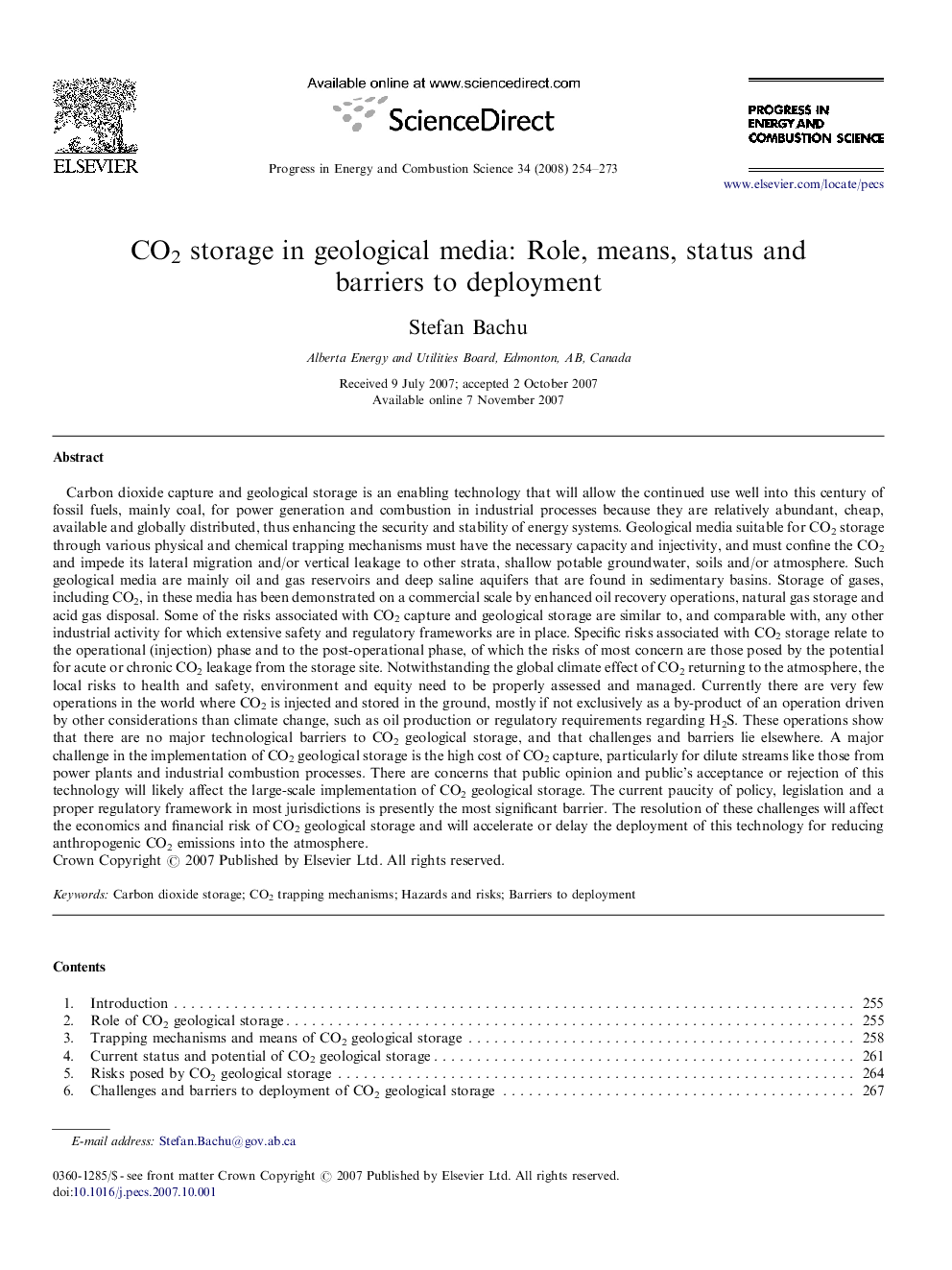| کد مقاله | کد نشریه | سال انتشار | مقاله انگلیسی | نسخه تمام متن |
|---|---|---|---|---|
| 241834 | 466336 | 2008 | 20 صفحه PDF | دانلود رایگان |

Carbon dioxide capture and geological storage is an enabling technology that will allow the continued use well into this century of fossil fuels, mainly coal, for power generation and combustion in industrial processes because they are relatively abundant, cheap, available and globally distributed, thus enhancing the security and stability of energy systems. Geological media suitable for CO2 storage through various physical and chemical trapping mechanisms must have the necessary capacity and injectivity, and must confine the CO2 and impede its lateral migration and/or vertical leakage to other strata, shallow potable groundwater, soils and/or atmosphere. Such geological media are mainly oil and gas reservoirs and deep saline aquifers that are found in sedimentary basins. Storage of gases, including CO2, in these media has been demonstrated on a commercial scale by enhanced oil recovery operations, natural gas storage and acid gas disposal. Some of the risks associated with CO2 capture and geological storage are similar to, and comparable with, any other industrial activity for which extensive safety and regulatory frameworks are in place. Specific risks associated with CO2 storage relate to the operational (injection) phase and to the post-operational phase, of which the risks of most concern are those posed by the potential for acute or chronic CO2 leakage from the storage site. Notwithstanding the global climate effect of CO2 returning to the atmosphere, the local risks to health and safety, environment and equity need to be properly assessed and managed. Currently there are very few operations in the world where CO2 is injected and stored in the ground, mostly if not exclusively as a by-product of an operation driven by other considerations than climate change, such as oil production or regulatory requirements regarding H2S. These operations show that there are no major technological barriers to CO2 geological storage, and that challenges and barriers lie elsewhere. A major challenge in the implementation of CO2 geological storage is the high cost of CO2 capture, particularly for dilute streams like those from power plants and industrial combustion processes. There are concerns that public opinion and public's acceptance or rejection of this technology will likely affect the large-scale implementation of CO2 geological storage. The current paucity of policy, legislation and a proper regulatory framework in most jurisdictions is presently the most significant barrier. The resolution of these challenges will affect the economics and financial risk of CO2 geological storage and will accelerate or delay the deployment of this technology for reducing anthropogenic CO2 emissions into the atmosphere.
Journal: Progress in Energy and Combustion Science - Volume 34, Issue 2, April 2008, Pages 254–273